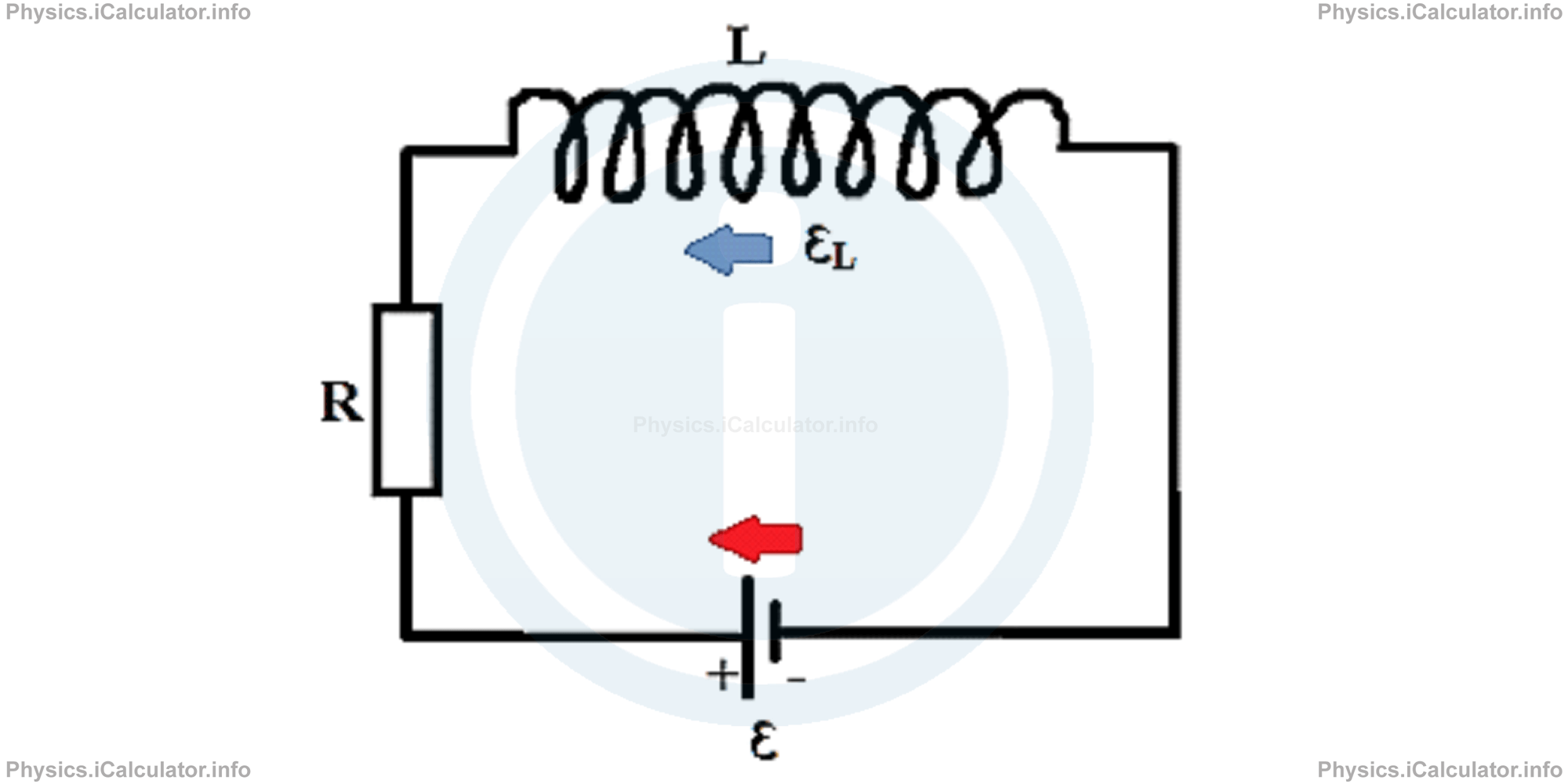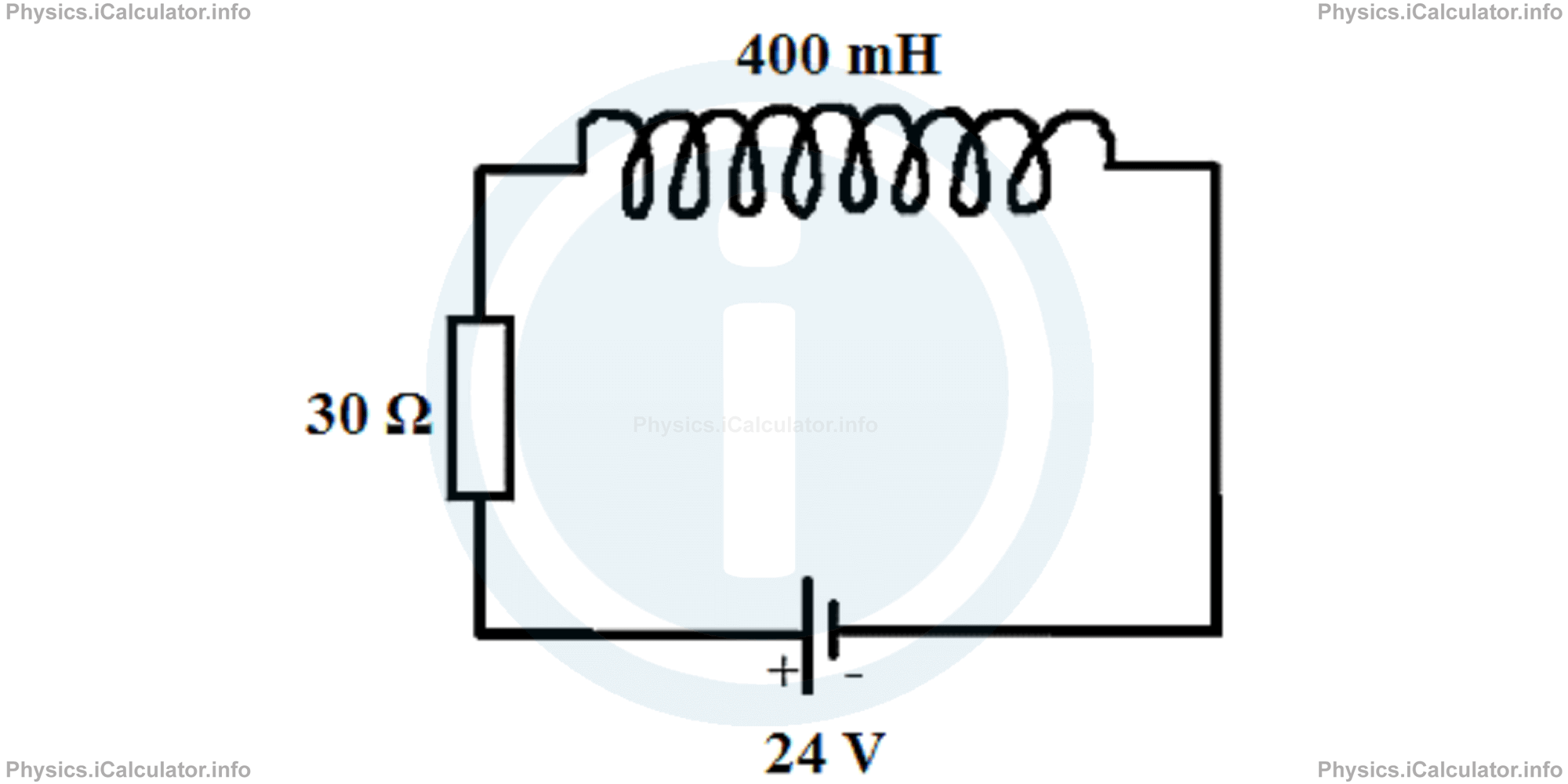Menu
Physics Lesson 16.13.1 - Energy Stored in a Magnetic Field
Please provide a rating, it takes seconds and helps us to keep this resource free for all to use
Welcome to our Physics lesson on Energy Stored in a Magnetic Field, this is the first lesson of our suite of physics lessons covering the topic of Energy Stored in a Magnetic Field. Energy Density of a Magnetic Field. Mutual Induction, you can find links to the other lessons within this tutorial and access additional physics learning resources below this lesson.
Energy Stored in a Magnetic Field
In Section 14, we have seen that two opposite charges attract each other, so we must do work to prevent them from colliding. On the other hand, we must do work to move two like charges close to each other as well. This is because like charges repel each other and they react when we try to bring them closer. We explained that this occurs because the charges possess some energy stored in them (electric potential energy), which we must overcome by doing work from outside.
The same thing occurs when bringing two magnets near each other. If we bring the opposite poles of two magnets near each other, they are attracted and we must do some work to move them apart. This means the system of magnets is storing energy in the form of magnetic potential energy.
Unlike in electricity, when studying the magnetic potential energy, we deal with currents instead of electric charges. Therefore, it is more suitable to analyse the magnetic potential energy using electromagnets, rather than simple permanent magnets. More precisely, RL circuits are the best systems for this purpose as they involve both electricity (through resistors) and magnetism (through inductors).

From the last tutorial "RL Circuits", we know that the equation that describes the relationship between the emf's (of the source and of inductor) and potential energy (of resistor), is
The above equation derives from the law of energy conservation, since any change in the above values is associated with the production or consumption of some energy (emf = work / charge).
When multiplying all terms of the above equation by i (to deal with power), we obtain
Let's explain what does each term of the above equation represent.
- The term ε ∙ i in the left side represents the total power delivered by the source, i.e. the total energy produced by the battery in the unit time. Thus, if a charge dQ passes through the battery in the time interval dt, the battery does the work ε ∙ dQ on the charge during the given time. The rate at which the battery is doing work (that is the total power delivered by the battery), is Ptot = ε ∙ dQ/dtIn other words, the term on the left side of the equation (1) represents the rate at which the source delivers energy to the rest of the circuit.
- The i2 ∙ R term represents the rate at which the energy appears (and is consumed) in the resistor in thermal form.
- The first term due right of equality sign in equation (1) represents the rest from the total energy produced by the battery (that is not delivered as thermal energy) in the unit time. Obviously, this must be the magnetic potential energy in the unit time, which is stored in the magnetic field of the inductor. If we denote the magnetic potential energy by Wm, we obtain for the rate of magnetic potential energy stored in the magnetic field of the inductor: dWM/dt = L ∙ i ∙ di/dtMultiplying both sides of the last equation by dt, we obtaindWM = L ∙ i ∙ diIntegrating both sides, we obtain∫W M0d WM = ∫i0L ∙ i ∙ diTaking the inductance of solenoid as constant, we obtain∫W M0d WM = L ∙ ∫i0i ∙ diThe last equation gives the (magnetic) potential energy stored in an inductor L when a current I flows through it. This equation is similar to that of the energy stored in a capacitor
WM = L ∙ i2/2Wc = Q2/2Cwhere the inductance L of inductor is analogue to the inverse of capacitance 1/C of capacitor and the current I flowing through the inductor is analogue to the charge Q stored in the capacitor.
Example 1
A 400 mH inductor and a 30 Ω resistor are connected in series to a circuit supplied by a 24 V battery, as shown in the figure.

- What is the energy stored in the magnetic field produced by the inductor after a long time of circuit's operation?
- How long does it take to the resistor to dissipate in the form of heat an amount of energy equal to the energy stored in the magnetic field of inductor?
Solution 1
Clues:
ε = 24 V
L = 400 mH = 0.4 H
R = 30 Ω
Wm = ?
t = ? (WR = Wm)
- First, we calculate the current in in the circuit. Giving that after a long time of circuit's operation the inductor behaves simply as a conducting wire, we assume the total resistance in the circuit is only due to the resistor. Therefore, using the Ohm's Law yields i = ε/RThe energy stored in the magnetic field produced by the inductor therefore is
= 24 V/30 Ω
= 0.8 AWM = L ∙ i2/2
= (0.4 H) ∙ (0.8 A)2/2
= 0.128 J - We denote by WR (instead of Q) the heat energy dissipated by the resistor, in order to avoid confusion between symbols (as in this tutorial we have expressed the electric charge by Q). From the Joule's Law, we have Wr = i2 ∙ R ∙ tSince WR = Wm = 0.128 J, we obtain for the time t in which the total heat dissipated by the resistor equals the heat stored in the inductor:t = WR/i2 ∙ RThis result means that most of heat produced by the source is dissipated in the form of heat energy by the resistor. Only a small amount of the total heat is stored in the magnetic field of the inductor.
= (0.128 J)/(0.8 A)2 ∙ (30 Ω)
= 0.00666s
You have reached the end of Physics lesson 16.13.1 Energy Stored in a Magnetic Field. There are 3 lessons in this physics tutorial covering Energy Stored in a Magnetic Field. Energy Density of a Magnetic Field. Mutual Induction, you can access all the lessons from this tutorial below.
More Energy Stored in a Magnetic Field. Energy Density of a Magnetic Field. Mutual Induction Lessons and Learning Resources
Whats next?
Enjoy the "Energy Stored in a Magnetic Field" physics lesson? People who liked the "Energy Stored in a Magnetic Field. Energy Density of a Magnetic Field. Mutual Induction lesson found the following resources useful:
- Storage Feedback. Helps other - Leave a rating for this storage (see below)
- Magnetism Physics tutorial: Energy Stored in a Magnetic Field. Energy Density of a Magnetic Field. Mutual Induction. Read the Energy Stored in a Magnetic Field. Energy Density of a Magnetic Field. Mutual Induction physics tutorial and build your physics knowledge of Magnetism
- Magnetism Revision Notes: Energy Stored in a Magnetic Field. Energy Density of a Magnetic Field. Mutual Induction. Print the notes so you can revise the key points covered in the physics tutorial for Energy Stored in a Magnetic Field. Energy Density of a Magnetic Field. Mutual Induction
- Magnetism Practice Questions: Energy Stored in a Magnetic Field. Energy Density of a Magnetic Field. Mutual Induction. Test and improve your knowledge of Energy Stored in a Magnetic Field. Energy Density of a Magnetic Field. Mutual Induction with example questins and answers
- Check your calculations for Magnetism questions with our excellent Magnetism calculators which contain full equations and calculations clearly displayed line by line. See the Magnetism Calculators by iCalculator™ below.
- Continuing learning magnetism - read our next physics tutorial: Alternating Current. LC Circuits
Help others Learning Physics just like you
Please provide a rating, it takes seconds and helps us to keep this resource free for all to use
We hope you found this Physics lesson "Energy Stored in a Magnetic Field. Energy Density of a Magnetic Field. Mutual Induction" useful. If you did it would be great if you could spare the time to rate this physics lesson (simply click on the number of stars that match your assessment of this physics learning aide) and/or share on social media, this helps us identify popular tutorials and calculators and expand our free learning resources to support our users around the world have free access to expand their knowledge of physics and other disciplines.
Magnetism Calculators by iCalculator™
- Angular Frequency Of Oscillations In Rlc Circuit Calculator
- Calculating Magnetic Field Using The Amperes Law
- Capacitive Reactance Calculator
- Current In A Rl Circuit Calculator
- Displacement Current Calculator
- Electric Charge Stored In The Capacitor Of A Rlc Circuit In Damped Oscillations Calculator
- Electric Power In A Ac Circuit Calculator
- Energy Decay As A Function Of Time In Damped Oscillations Calculator
- Energy Density Of Magnetic Field Calculator
- Energy In A Lc Circuit Calculator
- Faradays Law Calculator
- Frequency Of Oscillations In A Lc Circuit Calculator
- Impedance Calculator
- Induced Emf As A Motional Emf Calculator
- Inductive Reactance Calculator
- Lorentz Force Calculator
- Magnetic Dipole Moment Calculator
- Magnetic Field At Centre Of A Current Carrying Loop Calculator
- Magnetic Field In Terms Of Electric Field Change Calculator
- Magnetic Field Inside A Long Stretched Current Carrying Wire Calculator
- Magnetic Field Inside A Solenoid Calculator
- Magnetic Field Inside A Toroid Calculator
- Magnetic Field Produced Around A Long Current Carrying Wire
- Magnetic Flux Calculator
- Magnetic Force Acting On A Moving Charge Inside A Uniform Magnetic Field Calculator
- Magnetic Force Between Two Parallel Current Carrying Wires Calculator
- Magnetic Potential Energy Stored In An Inductor Calculator
- Output Current In A Transformer Calculator
- Phase Constant In A Rlc Circuit Calculator
- Power Factor In A Rlc Circuit Calculator
- Power Induced On A Metal Bar Moving Inside A Magnetic Field Due To An Applied Force Calculator
- Radius Of Trajectory And Period Of A Charge Moving Inside A Uniform Magnetic Field Calculator
- Self Induced Emf Calculator
- Self Inductance Calculator
- Torque Produced By A Rectangular Coil Inside A Uniform Magnetic Field Calculator
- Work Done On A Magnetic Dipole Calculator